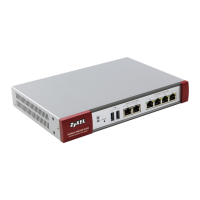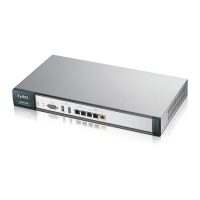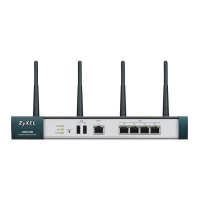ZyWALL USG 100/200 Series User’s Guide
897
CHAPTER 52
File Manager
52.1 Overview
Configuration files define the ZyWALL’s settings. Shell scripts are files of
commands that you can store on the ZyWALL and run when you need them. You
can apply a configuration file or run a shell script without the ZyWALL restarting.
You can store multiple configuration files and shell script files on the ZyWALL. You
can edit configuration files or shell scripts in a text editor and upload them to the
ZyWALL. Configuration files use a .conf extension and shell scripts use a .zysh
extension.
52.1.1 What You Can Do in this Chapter
•Use the Configuration File screen (see Section 52.2 on page 900) to store and
name configuration files. You can also download configuration files from the
ZyWALL to your computer and upload configuration files from your computer to
the ZyWALL.
•Use the Firmware Package screen (see Section 52.3 on page 904) to check
your current firmware version and upload firmware to the ZyWALL.
•Use the Shell Script screen (see Section 52.4 on page 906) to store, name,
download, upload and run shell script files.
52.1.2 What you Need to Know
Configuration Files and Shell Scripts
When you apply a configuration file, the ZyWALL uses the factory default settings
for any features that the configuration file does not include. When you run a shell
script, the ZyWALL only applies the commands that it contains. Other settings do
not change.

